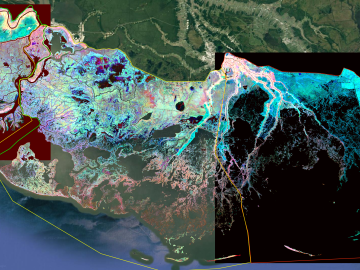
Filter News
Area of Research
- (-) Biology and Environment (180)
- (-) Fusion and Fission (55)
- (-) Materials (433)
- (-) Supercomputing (319)
- Advanced Manufacturing (34)
- Biological Systems (18)
- Biology and Soft Matter (5)
- Building Technologies (12)
- Chemical and Engineering Materials (4)
- Chemistry and Physics at Interfaces (11)
- Computational Biology (6)
- Computational Chemistry (5)
- Computational Engineering (5)
- Computer Science (19)
- Data (1)
- Electricity and Smart Grid (3)
- Energy Frontier Research Centers (14)
- Energy Science (526)
- Energy Sciences (5)
- Fossil Energy (3)
- Fuel Cycle Science and Technology (3)
- Functional Materials for Energy (16)
- Fusion Energy (19)
- Geographic Information Science and Technology (3)
- Isotope Development and Production (3)
- Isotopes (36)
- Materials Characterization (2)
- Materials for Computing (36)
- Materials Synthesis from Atoms to Systems (13)
- Materials Under Extremes (12)
- Mathematics (1)
- National Security (80)
- Neutron Data Analysis and Visualization (4)
- Neutron Science (212)
- Nuclear Science and Technology (75)
- Nuclear Systems Modeling, Simulation and Validation (3)
- Nuclear Systems Technology (1)
- Quantum Condensed Matter (4)
- Quantum information Science (9)
- Reactor Technology (1)
- Sensors and Controls (5)
- Transportation Systems (11)
News Type
News Topics
- 3-D Printing/Advanced Manufacturing (30)
- Advanced Reactors (11)
- Artificial Intelligence (42)
- Big Data (29)
- Bioenergy (54)
- Biology (76)
- Biomedical (33)
- Biotechnology (15)
- Buildings (8)
- Chemical Sciences (38)
- Clean Water (14)
- Composites (11)
- Computer Science (108)
- Coronavirus (23)
- Critical Materials (15)
- Cybersecurity (9)
- Education (1)
- Energy Storage (38)
- Environment (115)
- Exascale Computing (29)
- Fossil Energy (1)
- Frontier (33)
- Fusion (28)
- Grid (12)
- High-Performance Computing (59)
- Hydropower (8)
- Irradiation (1)
- Isotopes (15)
- ITER (6)
- Machine Learning (20)
- Materials (83)
- Materials Science (87)
- Mathematics (5)
- Mercury (7)
- Microscopy (35)
- Molten Salt (3)
- Nanotechnology (44)
- National Security (9)
- Neutron Science (45)
- Nuclear Energy (46)
- Partnerships (15)
- Physics (36)
- Polymers (19)
- Quantum Computing (21)
- Quantum Science (33)
- Security (7)
- Simulation (29)
- Software (1)
- Space Exploration (5)
- Summit (47)
- Transportation (22)
Media Contacts

Using neutrons to see the additive manufacturing process at the atomic level, scientists have shown that they can measure strain in a material as it evolves and track how atoms move in response to stress.

A new study by researchers at the Department of Energy’s Oak Ridge National Laboratory looks at some of the influences that could be driving the increasingly severe weather over Pakistan.

ORNL will lead three new DOE-funded projects designed to bring fusion energy to the grid on a rapid timescale.

ORNL, a bastion of nuclear physics research for the past 80 years, is poised to strengthen its programs and service to the United States over the next decade if national recommendations of the Nuclear Science Advisory Committee, or NSAC, are enacted.
To better understand important dynamics at play in flood-prone coastal areas, Oak Ridge National Laboratory scientists working on simulations of Earth’s carbon and nutrient cycles paid a visit to experimentalists gathering data in a Texas wetland.
When the second collaborative ORNL-Vanderbilt University workshop took place on Sept. 18-19 at ORNL, about 70 researchers and students assembled to share thoughts concerning a broad spectrum of topics.

As current courses through a battery, its materials erode over time. Mechanical influences such as stress and strain affect this trajectory, although their impacts on battery efficacy and longevity are not fully understood.

ORNL has been selected to lead an Energy Earthshot Research Center, or EERC, focused on developing chemical processes that use sustainable methods instead of burning fossil fuels to radically reduce industrial greenhouse gas emissions to stem climate change and limit the crisis of a rapidly warming planet.

Using light instead of heat, researchers at ORNL have found a new way to release carbon dioxide, or CO2, from a solvent used in direct air capture, or DAC, to trap this greenhouse gas. The novel approach paves the way for economically viable separation of CO2 from the atmosphere.

In 1993 as data managers at ORNL began compiling observations from field experiments for the National Aeronautics and Space Administration, the information fit on compact discs and was mailed to users along with printed manuals.


